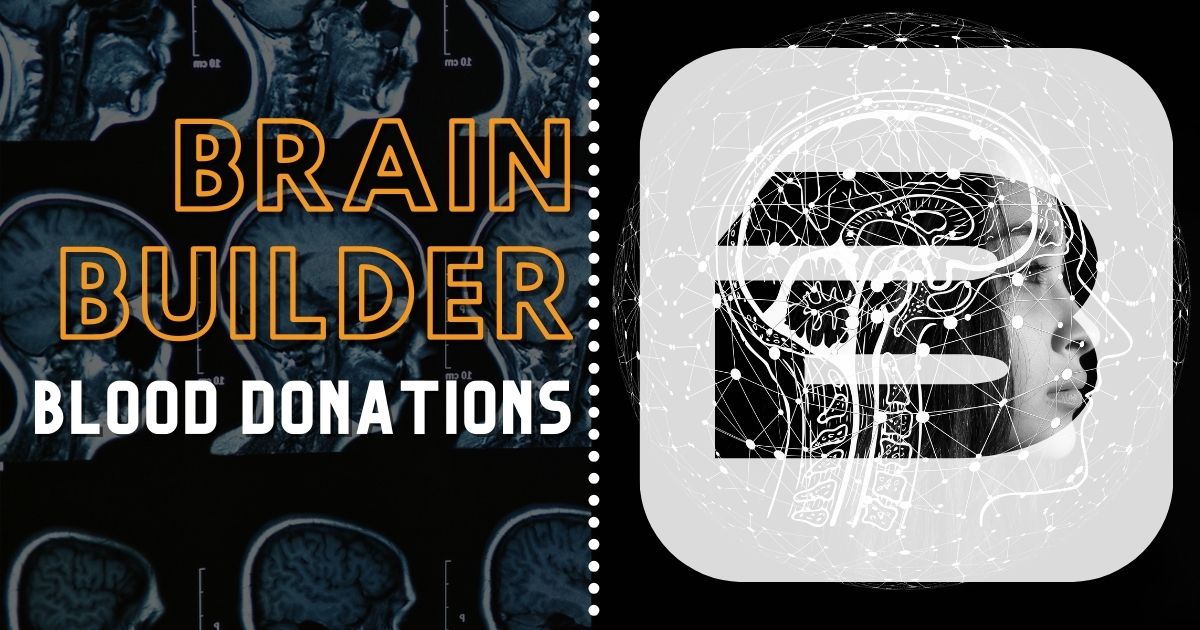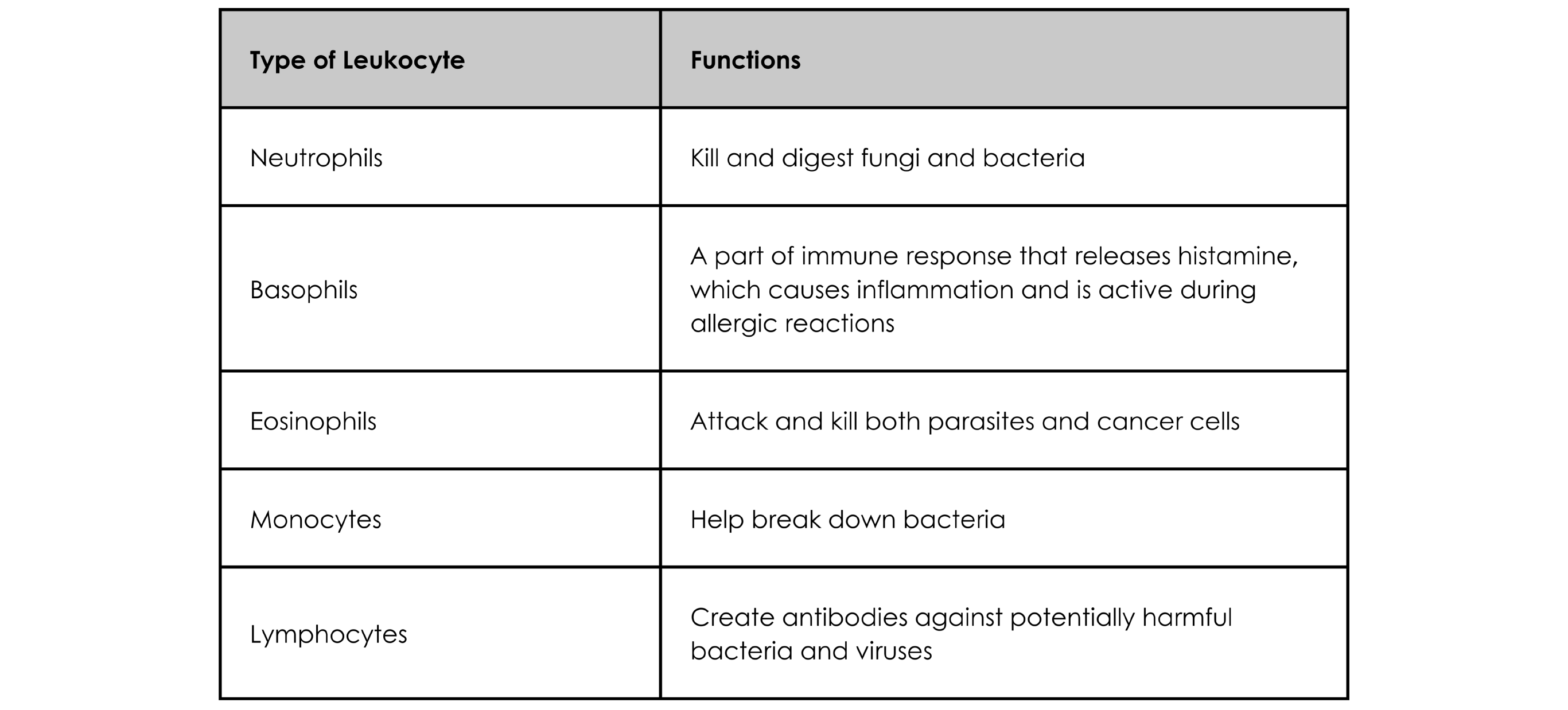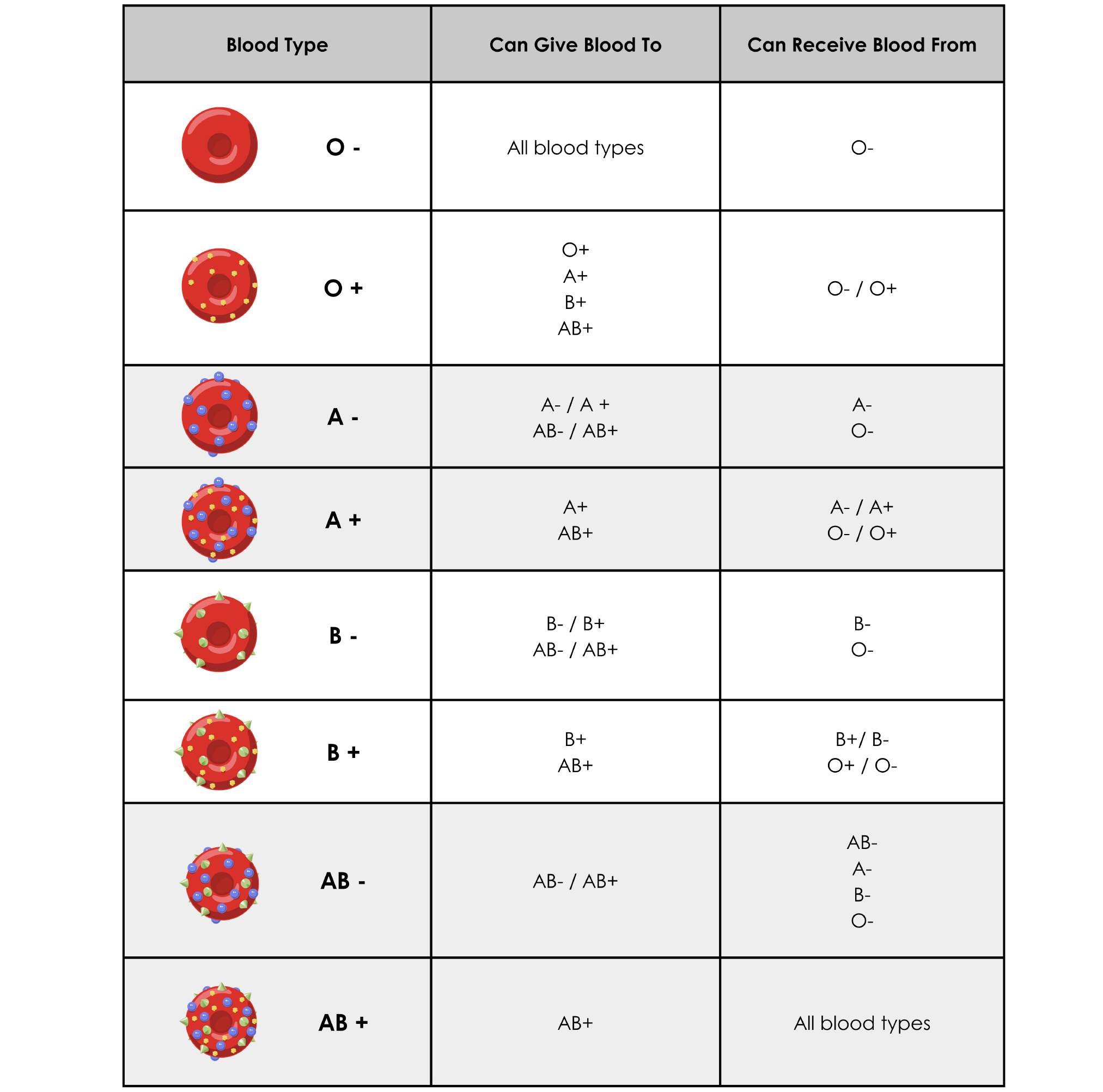Blood Donations
by Susan Terry, MS | January 22, 2025

Case study video explaining blood donations with a patient example!
Use the button below to schedule a demo to learn about our quizzes, flash cards, and other anatomy resources that support this Brain Builder!
Schedule a Demo
Overview
According to the Red Cross, nearly 5000 units of platelets, 6500 units of plasma, and 29,000 units of red blood cells are needed daily in the United States. Technology and medical advances have not yet created a substitute for human blood, so people who need blood rely on blood donors. In this Brain Builder, you will learn about the composition of blood and its characteristics, as well as what happens before, during, and after blood donation.
Background Information
Blood is made of formed elements and plasma. Erythrocytes comprise 44% of whole blood, leukocytes and thrombocytes make up 1%, and the remaining 55% is plasma.

Blood is red because it carries the pigment hemoglobin. The hemoglobin is a darker red with poor oxygenation and a bright red with full oxygen saturation. Erythrocytes appear as tiny flattened discs and they get rid of their nucleus to carry more oxygen. Leukocytes are larger and may or may not have granules in their cytoplasm.
There are several different types of leukocytes. Leukocytes are important for immune system responses when the body is invaded by an unknown substance. Neutrophils are the most numerous type of leukocyte.

Plasma is the non-living component of blood. It has no cells, but it does have a number of important proteins. Plasma is over 90% water. It has the protein albumin, three types of globulin proteins and fibrinogen, plus hormones and enzymes. Plasma has other solutes in it such as dissolved gasses like carbon dioxide and oxygen, ions, and various organic substances, such as vitamins.
When blood is prepared for a transfusion, it is often separated into erythrocytes and plasma. The white blood cells are removed to prevent a possible immune response from the patient. The donor may have had a virus that causes immune suppression, which can cause white blood cells to attack the recipient’s blood.
In 1941, Dr. Charles Drew became the head of the newly formed American Red Cross Blood Bank for blood used by the army and the navy. His research refined separating blood into cells and plasma. This extended the shelf life of plasma. This advancement increased the number of injured soldiers who could be saved if they were wounded in combat. Dr. Drew resigned from this position in protest of the continuing American Red Cross practice of segregating blood by the race of the donor.
Blood Types and Compatibility
You may be familiar with the blood types from the ABO system. People may need a blood transfusion if they are in a serious accident where they bleed and lose a large quantity of blood. Patients may also need a blood transfusion if they are seriously anemic or had chemotherapy. There are four different types of blood in the ABO Blood Group System.
The antigens are proteins found on the outer surface of the erythrocytes. Antibodies are also proteins, but they react to antigens. For example, blood type B has the B antigen present on its erythrocytes and it has anti-A antibodies. If a person with type B blood is incorrectly given a transfusion of type A blood, the anti-A antibodies will attack the donor cells and cause clumping. This reaction is called a transfusion reaction. This is avoidable with proper labeling and multiple checks by healthcare personnel administering transfusions.
Another important antigen on red blood cells is the Rh antigen. Scientists have identified over a dozen Rh antigens, but the one that is important in blood donations and transfusions is the Rh D antigen. If your erythrocytes have this antigen, you are said to be positive, and if you do not, you are negative. This designation is added to your ABO blood type. If you are O negative, you have type O blood and do not have the Rh antigen.
Rh antibodies are different from those of the ABO blood typing system. They do not form until someone who is Rh negative is exposed to the Rh positive antigen. Being Rh negative can become an issue if a woman who is Rh negative is pregnant with an Rh positive baby. While the mother’s blood and baby’s blood do not mix, Sometimes at birth, the mother’s blood and baby’s blood can mix. The mother’s body will produce anti-Rh antibodies and produce anti-Rh antibodies if it determines the baby’s Rh factor is a foreign protein. While this is not an issue for the first pregnancy, any future pregnancies will be at risk for miscarriage. The antibodies formed from the first pregnancy can cross the placenta and attack the unborn baby’s blood if that child is Rh positive. The unborn baby could have mild anemia or could have a severe reaction called hemolytic disease of the newborn where the antibodies cause the unborn child's erythrocytes to clump and rupture. The baby could die in the uterus or shortly after birth. Some newborns may need a blood transfusion after birth. Fortunately, this situation is almost entirely averted by administering RHO Gam injection to Rh negative mothers at the 26th to 28th week of pregnancy and then administering another RHO Gam injection within 3 days after birth.
Since the Rh negative anti-Rh antibodies do not form until the Rh negative individual is exposed to the Rh antigen, blood transfusion reactions are less of a problem.

Blood type O negative is often called the universal donor, because this type of blood can be given to any person regardless of blood type without triggering a transfusion reaction. This can be done in situations where there is no time to wait for a person’s blood to be typed. Likewise, the AB positive blood type is called the universal recipient.
Indications for Blood Transfusions (Signs and Symptoms)
Not every surgery or every accident requires that the patient receive blood transfusions. Doctors routinely do blood work, which can identify many diseases and conditions that can cause anemia. Severe anemia may be an indicator for a blood transfusion.
Another indicator would be losing a large quantity of blood. Replacing blood volume is important to keep blood circulation and oxygen levels at the correct levels. Losing blood makes your heart rate increase to pump the remaining blood through the body.
Situations and Medical Procedures that Commonly Require Blood Transfusions
- Accidents involving severe blood loss
- Chemotherapy
- Inherited blood disorders that interfere with clotting (hemophilia) or making hemoglobin (thalassemia)
- Anemia
- Organ Transplants
- Heart surgery
Blood Donation Process
- First, the nurse or worker will ask you your age (minimum of 17) and if you weigh at least 110 pounds. They will ask you questions about your general health and how you are feeling.
- Your temperature, blood pressure, pulse and hemoglobin levels will be checked. The nurse will prick your finger and test your hemoglobin level. If your hemoglobin level is too low, you are ineligible to donate.
- You will be given a donation bag which has a tube connected to it. You will be shown to a donor chair or table where you will donate your blood. The nurse will add a needle to the tube and insert it in your vein on the inside of your elbow. The bag has chemicals in it that keep the blood from clotting.
- You may be given a bicycle handle or a small squishy ball to squeeze, or you may be told to clench and unclench your hand until the bag is full. The bag hangs on a hook below the table which changes position when the bag is full.
- The nurse will clamp the tube that goes to the bag. Then, the nurse will take the needle out of your arm and put pressure on the bleeding area with a square of gauze. The gauze will be secured with tape.
- After you sit up and the nurse is sure you are feeling okay, not dizzy, and not feeling sick, you will be escorted to an area where there are refreshments, usually juice and cookies, to recover. If you begin to feel dizzy, sick to your stomach or otherwise unwell, notify the volunteers in the recovery area.
- Most people have little to no physical reaction to giving blood. After you have been released from the canteen area, you can resume your normal activities, but it is recommended that you not do heavy exercise until the next day.
Clinical Significance of Donating Blood
Donated blood in bags have a shelf life of 42 days, then they must be disposed of. The bags have an expiration date on their label. With this short shelf life, doctors and patients rely on donated blood for transfusions. Thanks to the millions of individuals who donate blood every year, those who may need a blood transfusion will receive the often lifesaving care they need.
Key Terms
Antibody - proteins that help destroy an unknown substance that has entered the body
Antigen - protein on cells that causes the body to have an immune response
Blood type - classification of a person's red blood cells based on the presence of specific proteins
Erythrocyte - also termed “red blood cells,” these blood cells carry a red pigment called hemoglobin which are responsible for moving oxygen to all cells and getting rid of carbon dioxide
Hemolysis - rupturing of red blood cells
Leukocyte - also termed “white blood cells,” these blood cells are an important part of the immune system and defend against disease by "eating" bacteria, fungi and viruses, and cancer cells. They also produce antibodies to attack these disease causing organisms
Rh factor - antigen found on the red blood cells of most people that is important in transfusion compatibility and hemolytic disease of the newborn
Thrombocyte - also termed “platelets,” these are fragments of very large cells that initiate blood clotting and send out chemical signals to attract more platelets to stop blood loss when the body has a bleeding injury
Schedule a demo today to learn how you can incorporate BodyViz into your classes and give your students the opportunity to practice using the information from this Brain Builder on real patients with authentic 3D dissection!
Schedule a Demo
Helpful Links: